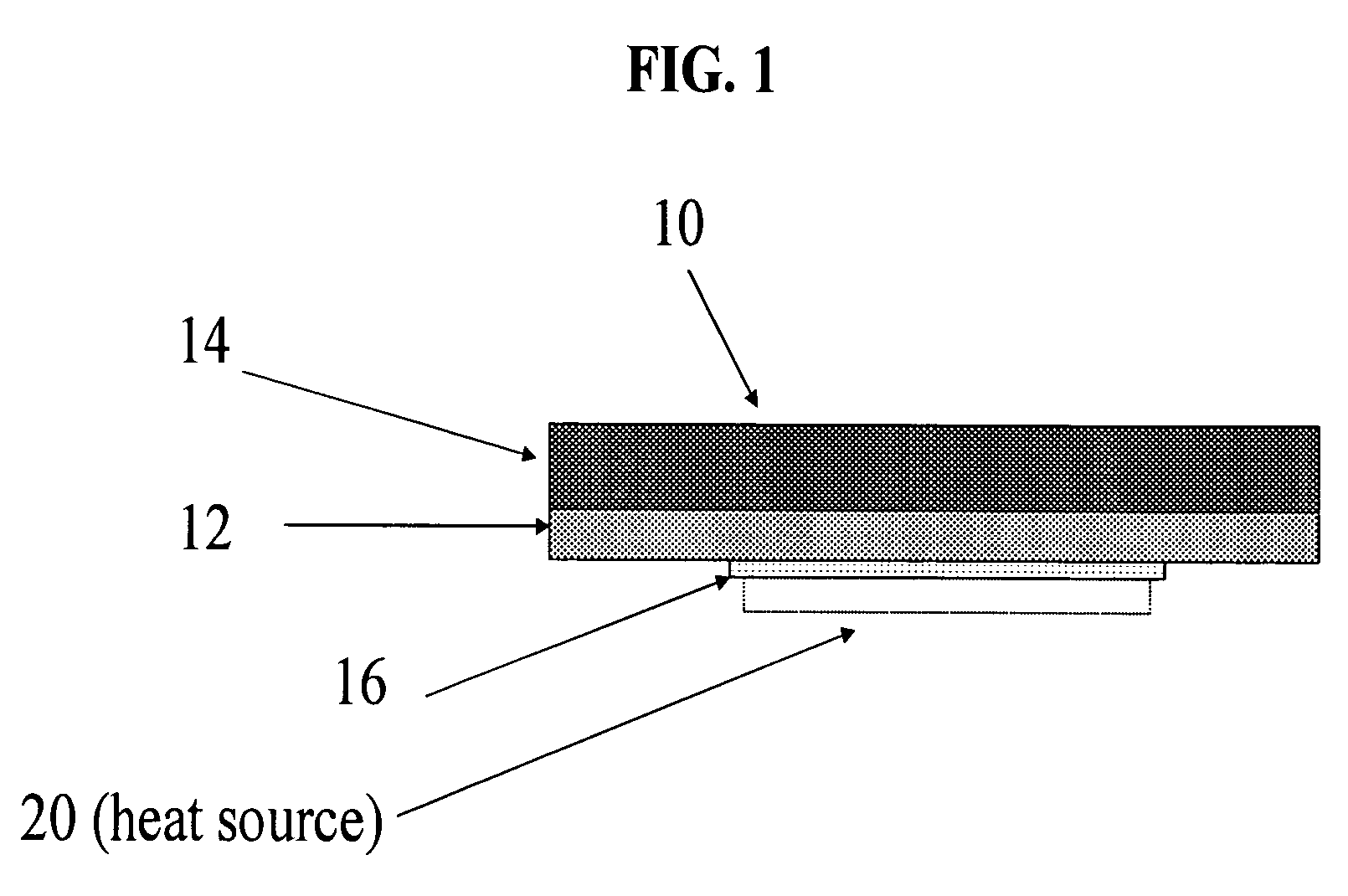Heat spreading thermal interface structure
a thermal interface and heat spreading technology, applied in the direction of electrical apparatus construction details, manufacturing tools, transportation and packaging, etc., can solve the problems of impracticality of using a thermal interface structure, the difficulty of fitting the heat removal system into the available space, and the difficulty of miniaturization of electronic components and systems
- Summary
- Abstract
- Description
- Claims
- Application Information
AI Technical Summary
Benefits of technology
Problems solved by technology
Method used
Image
Examples
Embodiment Construction
[0008]The thermal interface structure 10 of the present invention is of a multilayer construction comprising a core 12 composed of high conductivity metal such as, for example, copper, or a composition of any high conductivity metal alloy and is of a configuration having opposite sides with a soft filler material 14 disposed on one side thereof and a phase change material 16 disposed on the opposite side. The soft filler material 14 is of a thickness sufficient to permit the thermal interface structure 10 to accommodate a variable spacing between a heat source 20 and a heat sink (not shown) of up to 300 mils.
[0009]The phase change material 16 is formed as a layer in the interface structure 10 having a surface 21 with a surface area which defines its footprint which is smaller than the surface area or footprint of the metallic core 12 and smaller than the corresponding footprint of the gap filler 14 each of which, as shown in FIG. 1, should be considerably larger in dimension than th...
PUM
| Property | Measurement | Unit |
|---|---|---|
| thickness | aaaaa | aaaaa |
| thickness | aaaaa | aaaaa |
| thickness | aaaaa | aaaaa |
Abstract
Description
Claims
Application Information
 Login to View More
Login to View More - R&D
- Intellectual Property
- Life Sciences
- Materials
- Tech Scout
- Unparalleled Data Quality
- Higher Quality Content
- 60% Fewer Hallucinations
Browse by: Latest US Patents, China's latest patents, Technical Efficacy Thesaurus, Application Domain, Technology Topic, Popular Technical Reports.
© 2025 PatSnap. All rights reserved.Legal|Privacy policy|Modern Slavery Act Transparency Statement|Sitemap|About US| Contact US: help@patsnap.com


